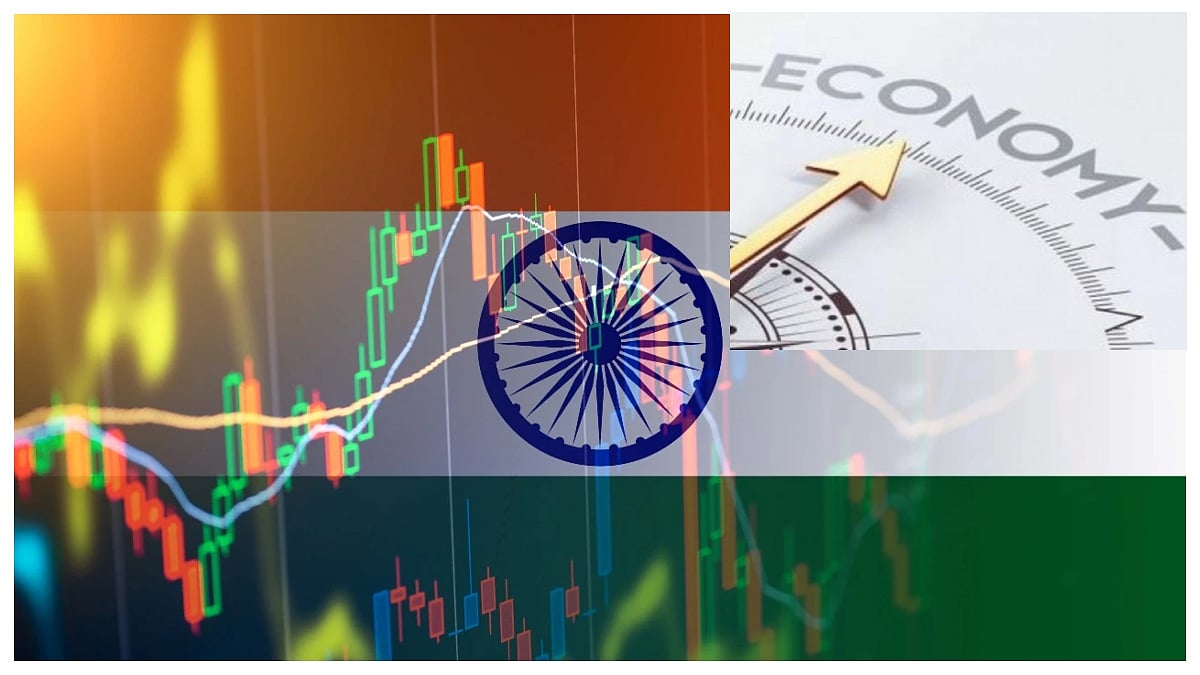India will soon be the world’s third-largest economy, over-taking Japan and Germany, driven by macroeconomic stability and purchasing power parity (PPP), according to the IMF data, and analyses by Forbes and The Free Press Journal.
India ranks fifth in the world’s GDP rankings for 2025. In terms of PPP, India is already the third-largest economy with a global GDP share of 8.23%. The growth is fueled by core sectors such as IT, services, agriculture, and manufacturing. India capitalizes on its broad domestic market, a youthful and skilled work-force, and an expanding middle-class.
The IMF estimated India’s GDP growth at 6.2% and 6.3% for FY25 and FY26, respectively. Early April, the Reserve Bank estimated the county’s growth forecast for FY26 at 6.5%. This outlook can be attributed to increased household spending, particularly in rural areas, driven by higher agricultural incomes and government support programmes.

Interestingly, though the GDP growth rate is lower at 2.2%, the share of global GDP of the US (adjusted for purchasing power parity) stands higher at 14.99%, which is lower than China’s 19.05%. China’s economic growth stands higher at 4.5%. Germany is growing at a slower 0.8%, and its global share is lower at 3.09%. Japan’s growth rate is 1.1%, and global share is 3.38%.

The UK’s growth rate stands at 1.5% (global share: 2.2%), France 1.1% (global share: 2.24%), Italy 0.8% (global: 1.85%), Canada 2.4% (share: 1.33%) and Brazil 2.2% with a global share of 2.42%.
The economic scarring from the Covid-19 shocks is different across countries, with emerging markets evidently the hardest hit. After a long period of economic integration such as globalisation, an alarming divergence between countries has emerged.
Fragmentation, climate change, and fragility left many countries at a breaking point. The US maintains its No. 1 status, with a GDP of over $30.34 trillion, steadfastly preserving its top position from 1960 to 2025.
Its economy boasts remarkable diversity, propelled by important sectors, including services, manufacturing, finance, and technology. The country enjoys a substantial consumer market, fosters innovation and entrepreneurial spirit, possesses resilient infrastructure, and experiences advantageous business conditions.
China has witnessed an upsurge in its economic progress, moving from the fourth rank in 1960 to the second rank in 2025. The economy predominantly hinges upon manufacturing, exports, and investment. It possesses an extensive workforce, robust governmental backing, infrastructural advancements, and an expanding consumer market.
The German economy focuses on exports, and is renowned for its precision in engineering, automotive, chemical, and pharmaceutical sectors. It derives advantage from its proficient labour force, and R&D initiatives.

Japan’s economy is distinguished by its progressive technology, manufacturing prowess, and service industry. Leading sectors include automotive, electronic, machinery, and financial domains.
Japan is known for its unwavering work ethic, pioneering technological advancements, and exports of superior quality. The economy of the UK is a blend of services, manufacturing, finance, and creative sectors. London serves as a global financial centre, attracting foreign investments.
The economy of France is characterised by diversification, with a strong emphasis on industries such as aerospace, tourism, luxury goods, and agriculture.
Italy is a highly developed market and the third-largest economy in the EU bloc. The Canadian economy relies heavily on its abundant natural resources, encompassing oil, gas, minerals, and timber.

Moreover, the nation boasts a thriving services sector, a well-established manufacturing industry, and a steadfast dedication to fostering innovation and technological advancements.
The Brazilian economy exhibits a breadth of sectors, encompassing agriculture, mining, manufacturing, and services. It is a prominent global hub for agricultural production and exportation.










